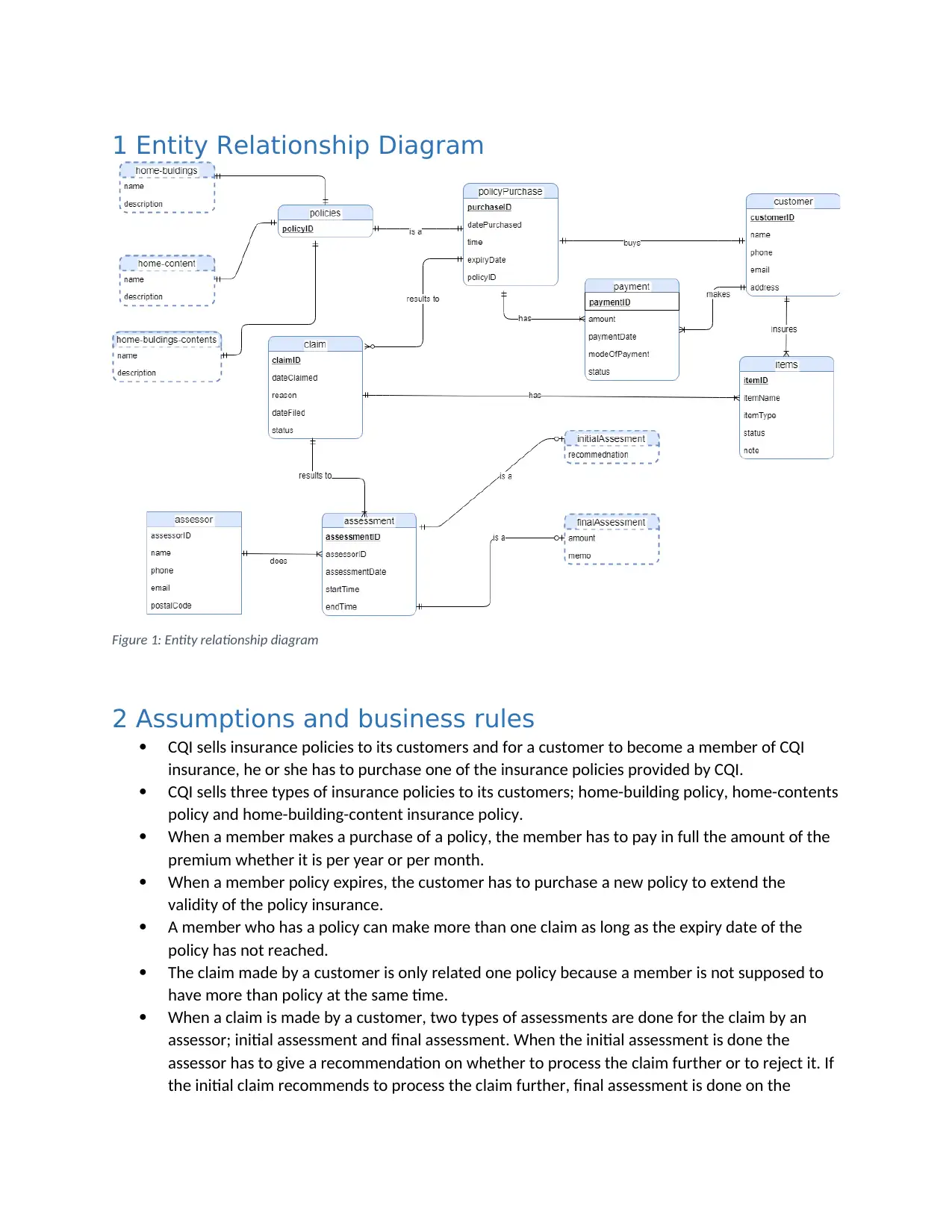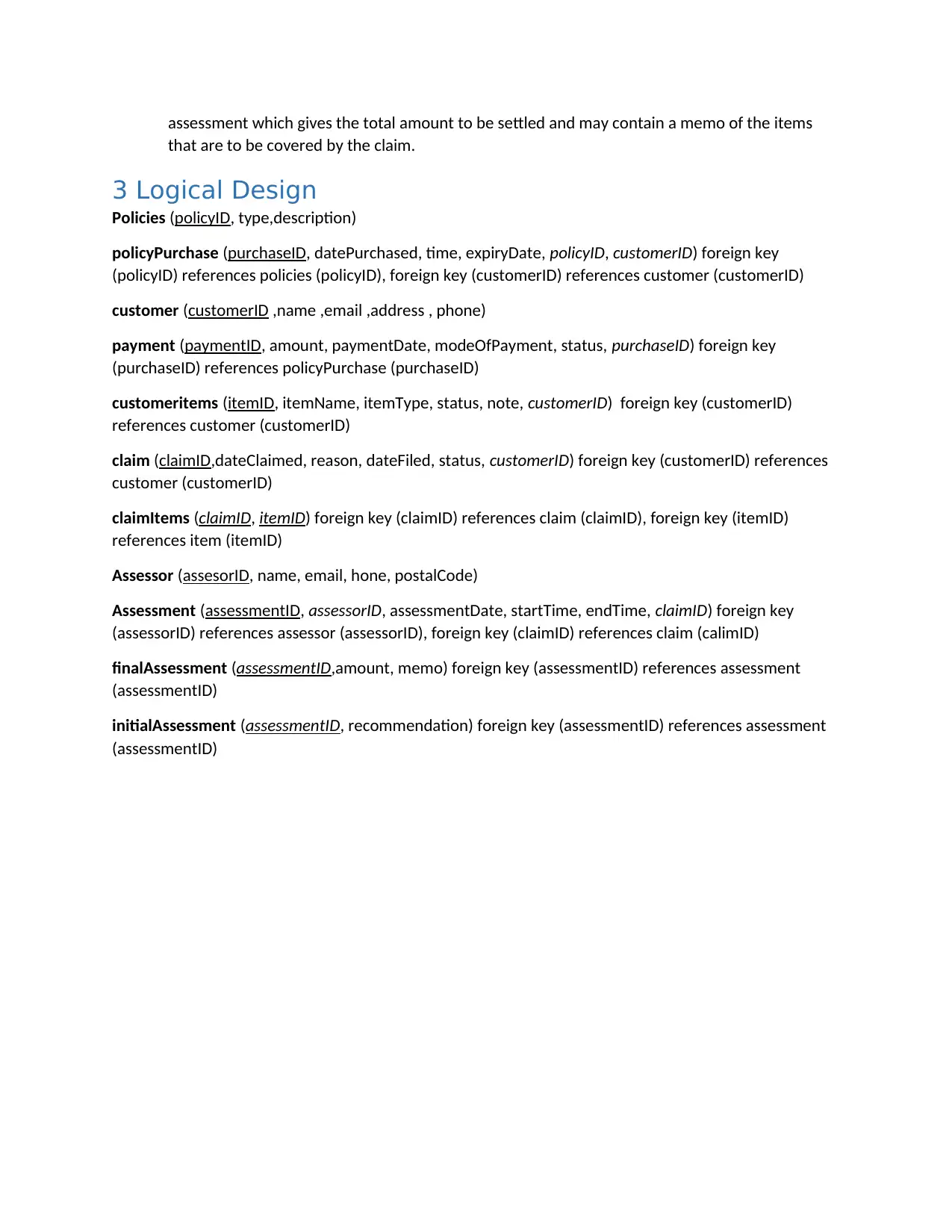CQI Insurance System: Data Modeling and ERD - Assignment 1
VerifiedAdded on 2023/06/14
|4
|538
|198
Practical Assignment
AI Summary
This assignment presents a solution to a data modeling problem focused on CQI Insurance. It includes an Entity Relationship Diagram (ERD) illustrating the relationships between entities such as policies, customers, claims, and assessors. The solution outlines assumptions and business rules governing the insurance operations, including policy types, purchase conditions, claim processes, and assessment procedures. Furthermore, the ERD is transformed into a logical design, specifying tables with primary and foreign keys to represent the database schema in 3rd Normal Form (3NF). This assignment showcases the process of translating business requirements into a structured database model, essential for efficient data management and application development. Desklib offers a wealth of similar solved assignments and study tools to aid students in their academic pursuits.
1 out of 4











![[object Object]](/_next/static/media/star-bottom.7253800d.svg)